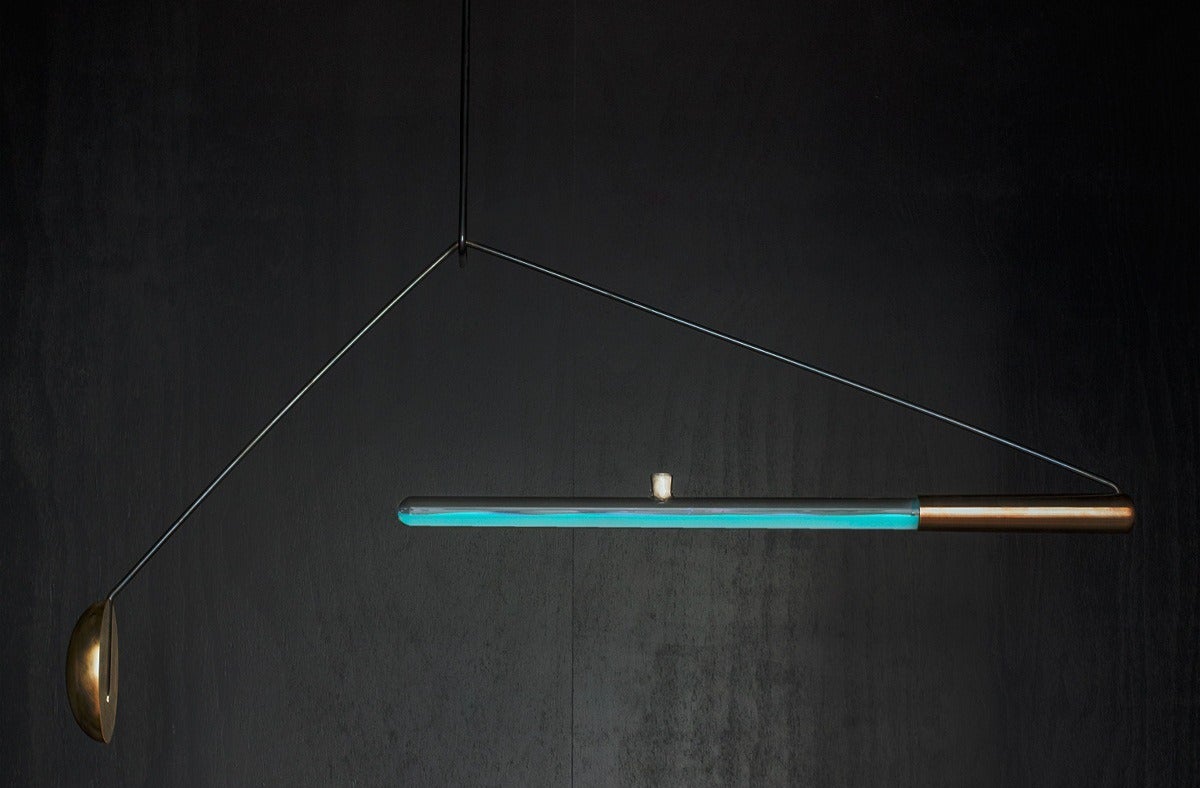Dutch designer creates lamp powered by octopus bacteria
Teresa van Dongen said she was influenced by bioluminescence found in the sea and wanted to harness it to explore new forms of energy

Your support helps us to tell the story
From reproductive rights to climate change to Big Tech, The Independent is on the ground when the story is developing. Whether it's investigating the financials of Elon Musk's pro-Trump PAC or producing our latest documentary, 'The A Word', which shines a light on the American women fighting for reproductive rights, we know how important it is to parse out the facts from the messaging.
At such a critical moment in US history, we need reporters on the ground. Your donation allows us to keep sending journalists to speak to both sides of the story.
The Independent is trusted by Americans across the entire political spectrum. And unlike many other quality news outlets, we choose not to lock Americans out of our reporting and analysis with paywalls. We believe quality journalism should be available to everyone, paid for by those who can afford it.
Your support makes all the difference.Stunning bioluminescence in the sea influenced a Dutch designer so much that she created a lamp whose light is powered by octopus bacteria.
Dutch designer Teresa van Dongen said she was inspired by micro-organisms in seawater that glow every time a wave provides them with oxygen.
The lamp, called Ambio, “balances two weights and a glass tube half-filled with a ‘Artificial Seawater Medium’ containing a carefully selected type of these unique luminescent species,” Ms van Dongen’s website states.
“Give the lamp a gentle push every so often and the weights will keep it moving and thus glowing.”
She said that Ambio is harnessing the energy potential of the natural world – but told The Independent that unfortunately it’s not yet for sale as it’s still in the development stage. She has finalised one - her graduate project - and is the process of making two more which will go into galleries.
Ms van Dongen, who previously studied biology which "remains an inspiration to her work", said that she had to provide the bacteria with optimised, man-made conditions that emulated seawater.
“The bacteria inside the tube only has enough food for about two days until they need to be replaced,” she said, adding that she is now working alongside two academics to try and prolong the lifespan of the bacteria.
“In theory the population could last much longer but just not inside the tube,” she said.
One push of her lamp and the waves move for 20 minutes, keeping the organisms alight - while there is an entrance in the tube to allow for a steady stream of oxygen without letting in pathogens.
The bacteria were extracted, with the help of two TU Delft students, from the skin of octopuses.
“For a while now I have been doing research into new forms of light and energy. My goal is to create a living lamp for the home,” she told Dezeen.
“Our aim is to create an installation where new medium with nutrients – liquid food – is constantly added to the fluid with bacteria while the abundant amount of fluid is constantly drained, without using electricity. In this way we can theoretically keep the population alive for an eternity.”
Join our commenting forum
Join thought-provoking conversations, follow other Independent readers and see their replies
Comments